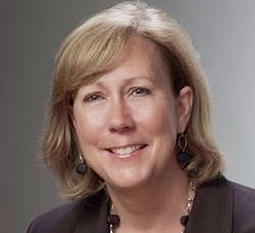Why Precision, Not Volume Is the Real Social Media Story for 2014
14/01/2014Health records of every NHS patient to be shared in vast database – Telegraph
14/01/2014CHIME Time: Patient engagement through the patient portal | Modern Healthcare
By Donna Roach
For providers who want to involve patients in their own care and form closer ties with consumers, now might be the best time in years to implement this strategy.
The Pew Research Center’s Internet & American Life Project recently reported that 69% of U.S. adults track a health indicator for themselves or a loved one. The California HealthCare Foundation reported that, “Patients pay more attention and become more engaged in their health and medical care when they have easy access to their health information online.”
Although there is clear data supporting the need for providers to offer effective and user-engaging patient portals, many systems launched to date have fallen short of meeting patients’ needs. Providers have made a commitment to discovering why this is the case, driven by pressures to meet the expectations of patients and communities.
A patient portal is a secure online website that offers consumers convenient 24-hour access to personal health information and medical records through an Internet connection. A portal should be a starting point for other sites, provide the capability to usher in new applications and technology and streamline processes. A patient portal should also engage the users and encourage them to regularly access their information.
So why aren’t patient portals more common?
Other consumer-friendly portals provide ready examples of how to facilitate interactions and engage users. For example, Pinterest is the fastest-growing social network, accessed by 15% of American Internet users. Pinterest is a pinboard-style photo-sharing website that enables users to create and manage their own image collections or events, interests and hobbies. Each “pin” posted to the site serves as a portal into a personal web collection or other themed sites.
On the other hand, Facebook and Twitter provide more up-to-date content and real news information than most standard news sites. And ESPN.com provides access to a variety of sports portals for up-to-date content. These sites have one thing in common—users interact with the sites many times a day, returning multiple times to access new content.
This type of engagement should be the ultimate goal for patient portals.
To achieve that goal, patient portals must include secure messaging linking patients and the provider, prescription refills, lab results and online bill payment. In my organization, we offer a patient portal that is directly integrated with the enterprise electronic health record. Additional features include appointment requests and verification; demographic information updates; laboratory results and patient education materials; clinical record summaries; continuity of care document downloads; discharge information and online bill payment.
We introduced the portal in March 2013, and it now has 13,000 active users. That growth was driven by efforts to increase awareness of the portal’s benefits among our patients and community, and their realization that the portal’s benefits go far beyond general convenience. The portal is helping to alleviate follow-up phone calls to physician offices. In the past year, we also introduced the portal to inpatients, offering them access to discharge information and follow-up patient care instructions. As the portal evolves, we’re planning improvements and upgrades.
The portal also has served as a successful measurement for meaningful use Stage 1. Stage 2 also sets objectives for patient engagement for which portals could prove effective. Overall, the most significant benefit of the portal has been the opportunity to offer an accessible, effective engagement tool to patients and the community.
Our patient portal is much more than just an online tool; it supports a strategy focused on enhancing patient engagement within our community and with our providers. As the industry becomes more focused on ambulatory care, the portal is another way to strengthen our ambulatory presence and reach more individuals beyond hospital walls. The patient portal can also be an efficient and effective method of communicating with patients outside of the office. The most pronounced portal benefit, however, is the improvement in healthcare quality it encourages, stemming from patients’ active engagement in their health and healthcare.
See on www.modernhealthcare.com




